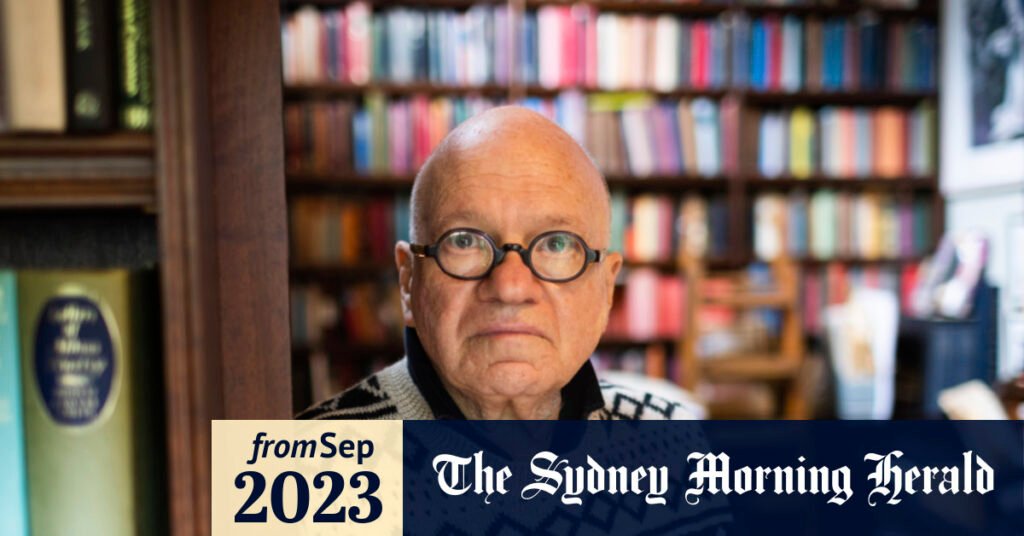Britain agreed there were parallels between Friend and French artist Paul Gauguin, who had relationships with under-age girls and fathered several children while living in the south Pacific around the turn of the 20th century. “Gauguin is freely exhibited everywhere. It attracts criticism, but it doesn’t persuade the galleries to withdraw the art from their walls.“
Britain said Friend’s very candid entries in his diary had resulted in his work being almost entirely removed from public institutions, but it was still shown in Bali.
“The major institutional galleries have entirely removed any trace of Donald Friend from their walls,” Britain said. “I think what it does is blunt our historical sense. We’re really writing him out of art history, which is a form of censorship in itself. I think it’s a matter of great concern and should at least be debated.”
A spokesperson for the National Gallery of Australia said it had 75 works by Friend in its collection, but none were on display. They declined to comment on whether Friend’s paedophilia had influenced their hanging policy.
Art historian Chris McAuliffe, an emeritus professor at ANU and former director of the University of Melbourne’s Ian Potter Museum of Art, said he was against the cancel culture alibi for the disappearance of Friend’s art.
“One of the reasons not many people are showing Donald Friend’s work is that it’s not very good,” he said. “If a museum is telling the story of Australian art through the work of the most dynamic and challenging artists, I don’t think Donald Friend is one of them.”
McAuliffe is working on a research project called Dialogue with Difficult Objects, which “aims to support effective and proactive engagement — by museum staff, community members, audiences — with provocative and controversial objects in Australian museums”. He said many museums have objects that are invested with trauma and negativity.
“In the case of Donald Friend, how can you show the work without having a conversation with survivors of sexual assaults, or sexual relations imbalanced through cultural or economic power? The content of the work could be very traumatic for many visitors. Sometimes the decision to show an artist’s work depends on more than a gallery curator.”
Britain said he was particularly interested in Friend’s early years because the artist’s diaries told much of his later life.
“It was those formative years that had been completely uncovered, unnoticed and neglected. So I decided to concentrate on that. My book certainly doesn’t ignore the later years. It shows them in formation – the formation of his interest in Asia, the formation of his particular line in art, which was decorative, satirical, and figurative, and the formation of his sexuality.”
Loading
It seems the reluctance of galleries to exhibit Friend’s work is matched by the reluctance of publishers to take on the new biography. Britain, the editor of an abridged edition of the artist’s diaries and author of Once an Australian: Journeys with Barry Humphries, Clive James, Germaine Greer and Robert Hughes, offered it to 17 publishers.
“I was only aware that two of them may have actually taken a look at my text because they responded to certain things about the level of my research and my style. But they were concerned about this issue. But most of them gave no response at all; it was just a trigger knee-jerk ‘no’, without explanation.”
He said it had taken him three years to find a publisher. “In some ways, I feel lucky that I had to wait for such a good outcome because I doubt whether an academic or even a commercial press would have given the book such lavish production values.”
Britain began work on the book after reviewing the third volume of Friend’s diaries.
“I was just overwhelmed. They [the diaries] are one of the great historical sources for us in Australia that few historians have used, and yet they speak about so much in our culture and society that would be very valuable in any general social history of Australia. Being a literary person, I was more turned on by the writing than the painting.”
Whether anyone views the paintings in public again remains to be seen.
The Making of Donald Friend is published by Yarra & Hunter Arts Press.
The Booklist is a weekly newsletter for book lovers from books editor Jason Steger. Get it delivered every Friday.






